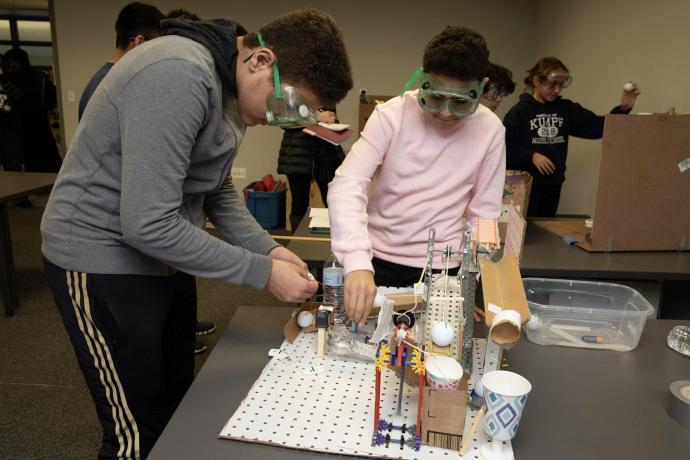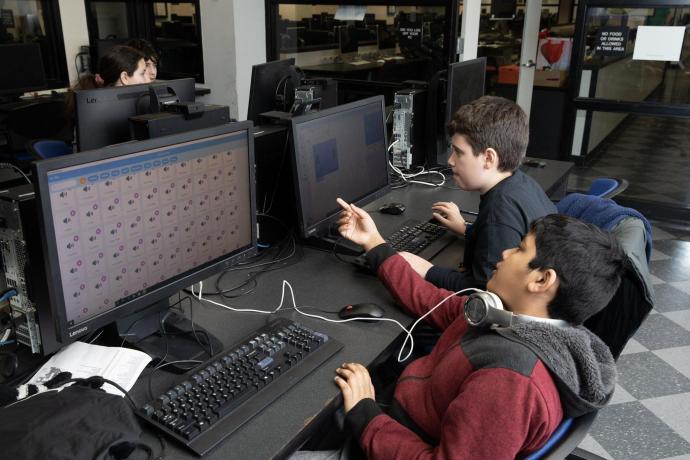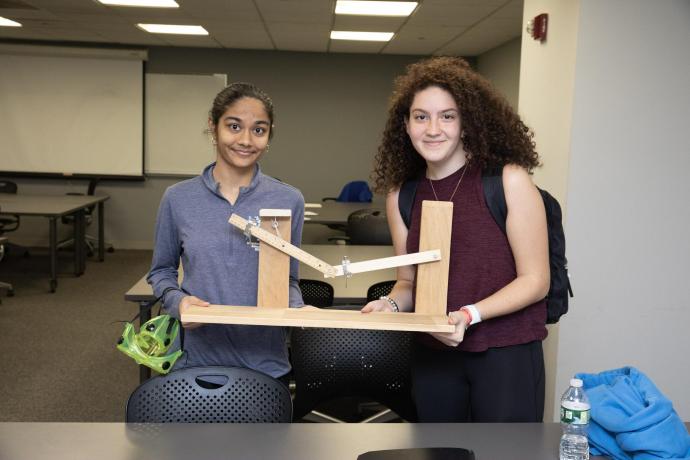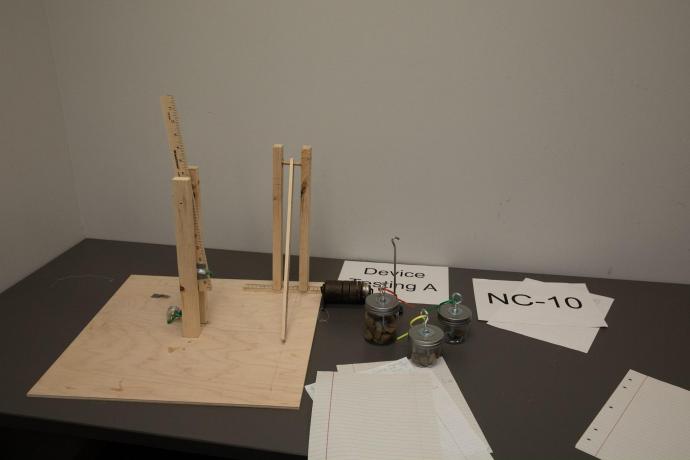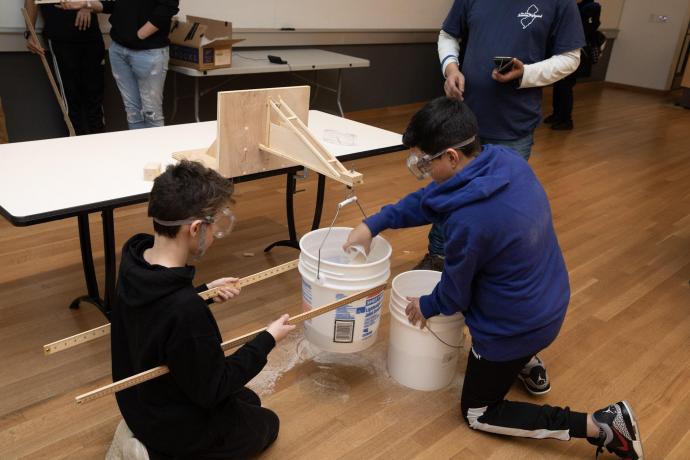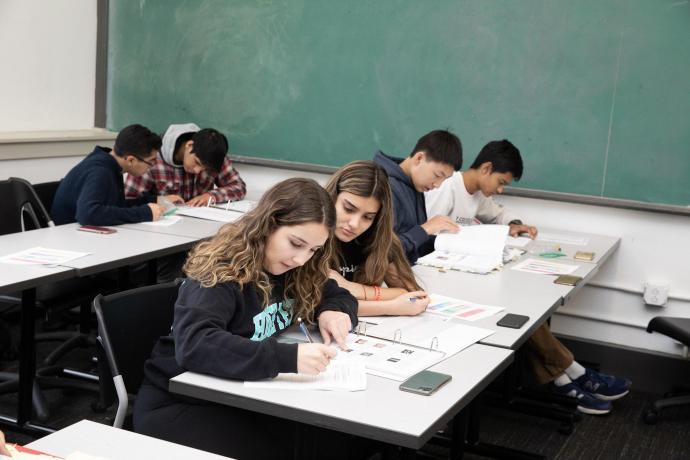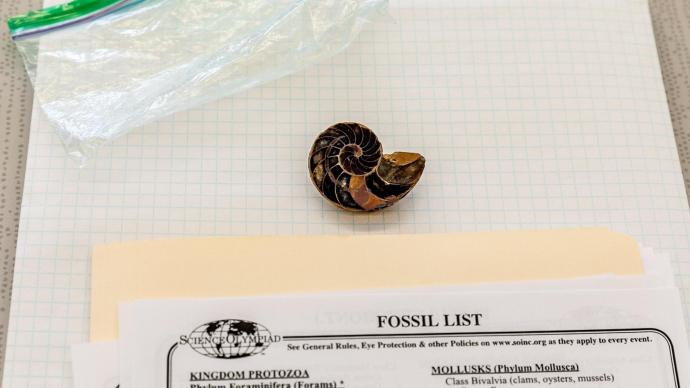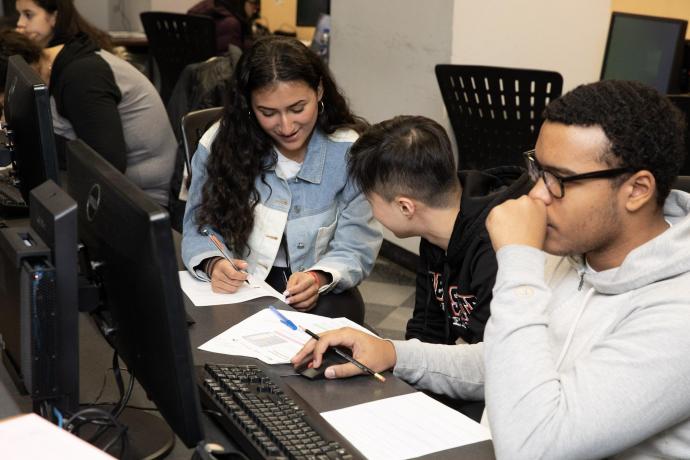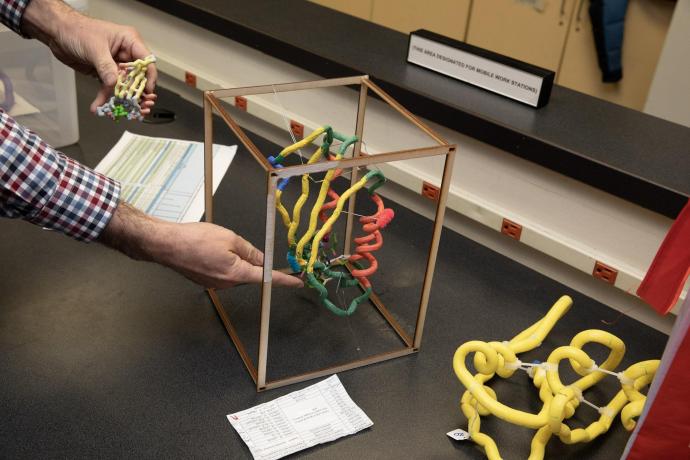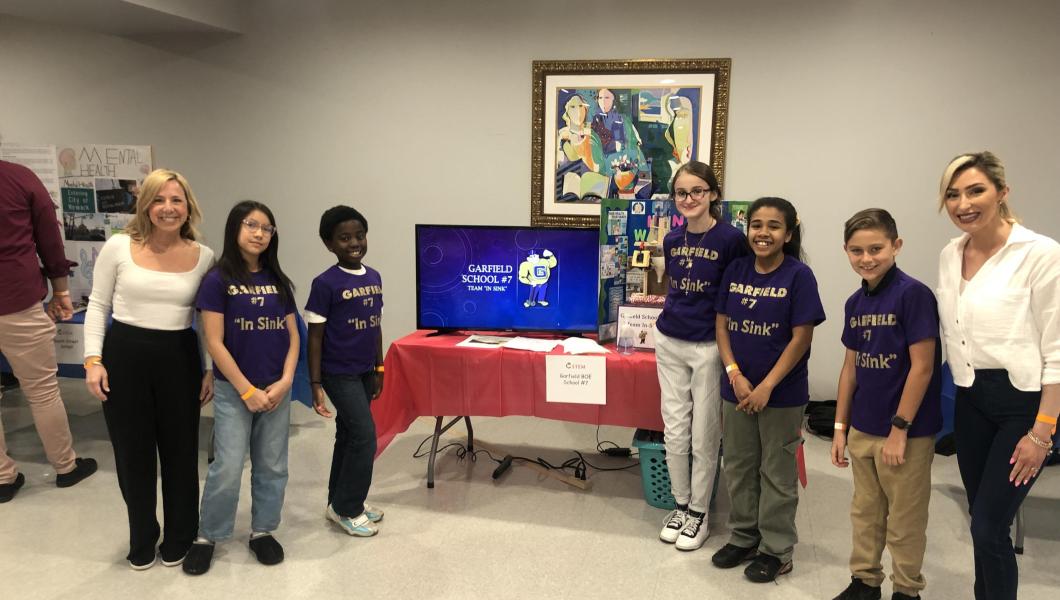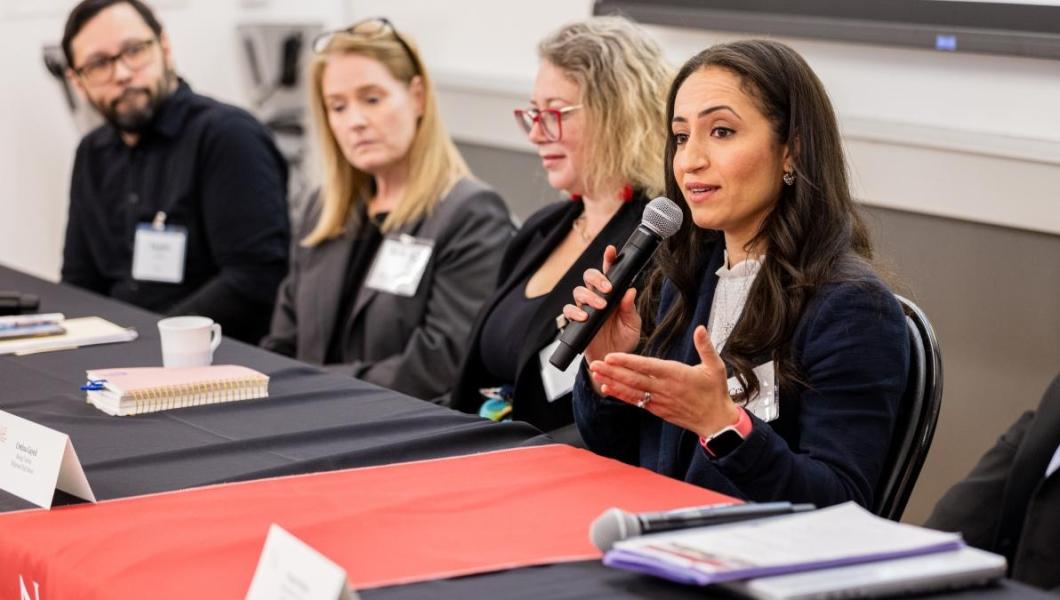Science Olympiad Spotlights STEM Know-how of More Than 700 Pre-College Students

They came, they competed and, at day’s end, they convened, to learn the results of the 2020 New Jersey Science Olympiad, hosted on campus Jan. 6 by NJIT for the 14th consecutive year. Hundreds of students making up 43 teams from high schools and middle schools from throughout the Garden State put their knowledge in science, technology, engineering and mathematics (STEM) to the test in 19 hands-on activities.
The excitement in the Campus Center Ballroom was palpable as the winners were announced for each event in both the middle school and high school divisions. It was even more so when the six overall top scorers in each division were revealed. These schools, which will compete in the statewide Science Olympiad, include Hillsborough High School and Al-Ghazaly Middle School (first place), Millburn High School and Glenfield Middle School (second place), Union County VoTech and Montgomery Upper Middle School (third place), High Technology-Monmouth and Tenakill Middle School (fourth place), Al-Ghazaly High School and Alpine Middle School (fifth place) and Montville High School and Robert R. Lazar Middle School (sixth place).
Here is a look at some of the day’s events, coordinated by NJIT’s Center for Pre-College Programs:
(Below) Students from Al-Ghazaly Middle School put the finishing touches on their Rube Goldberg-like machine for “Mission Possible.” The activity tasked them with creating a device, built before competition day, that through a series of actions would place a golf ball on a tee. The more actions they included — a maximum of 12 — the more points they scored. Each tally also included one official run.
(Below) Participants in “Game On” used Scratch programming language to design and build an original computer game incorporating the theme of “electricity” — all within 50 minutes. Among the factors considered for scoring were coding, artwork, game mechanics and user control. This team from Glenfield Middle School developed a trivia game, in which correct answers enabled players to move through a maze.
(Below) Teams taking part in “Machines,” including these students from Immaculate Heart Academy, arrived with lever-based measuring devices they built beforehand to determine the ratio between two masses. They were given pre-weighed rocks (whose masses were unknown to them) to hang from one end of the lever, and defined weights to suspend from the other. Providing just five minutes for setup and four minutes for determining the ratio, the competition was “massive.”
(Below) Achieving the highest structural efficiency was the objective for “Boomilever,” which challenged students to design and build an apparatus out of balsa wood that could withstand up to a maximum weight of 15 kilograms of sand over a six-minute period. While one student shoveled sand into a bucket attached to their boomilever with a chain, the other secured the bucket using yardsticks. The boomilever of these Macopin Middle School students proved strong, supporting 12.314 kilograms of sand.
(Below) For “Fossils,” students identified and classified actual specimens by age, geologic time period and other factors. Armed with binders filled with information they gleaned from their classroom instruction, they also demonstrated their general knowledge of past environments and ecosystems, and adaptations and evolutionary relationships. These high schoolers were among the first teams competing in this event.
(Below) Applied Technology High School students were one of many teams participating in “Protein Modeling,” which required them to prebuild a DNA protein model and then answer questions online about the protein and DNA editing. Materials used to construct the models ranged from pipe cleaners, to yarn, to tubes.
Video by Andy Mattison
